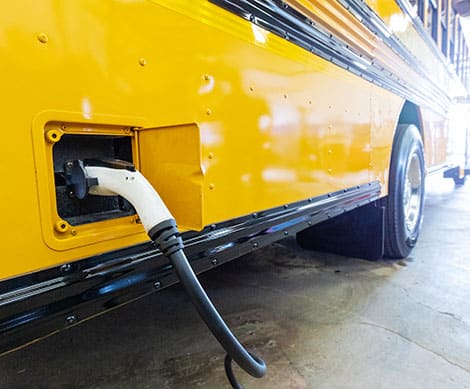New York Announces Multi-State Agreement to Expedite Electrification of Buses, Trucks

Democratic Governor Andrew Cuomo on July 14 signed an agreement with 14 other states and the District of Columbia to electrify the medium- and heavy-duty bus and truck market. The memorandum of understanding sets goals of 30 percent zero-emission new vehicle sales by 2030 and 100 percent by 2050. The signatories will work through the 2013 multi-state Zero Emission Vehicle Task Force to develop and implement an action plan. Trucks and buses, which represent an estimated four percent of vehicles in the U.S. are responsible for nearly a quarter of the total transportation sector emissions nationwide.
The measure supports New York’s efforts to achieve 85 percent emissions reduction by 2050 relative to 1990 levels under the Climate Leadership and Community Protection Act. The transportation sector represents about 34 percent of the state’s total emissions.
The move comes on the heels of California’s zero-emission truck rule adopted last month. The first-in-the nation standard requires all trucks sold in California to be zero emission by 2045. The rule will advance the state’s goal of reducing greenhouse gas emissions by 40 percent and petroleum use by 50 percent by 2030.
The 16 signatories of the new pact are California, Connecticut, Colorado, Hawaii, Maine, Maryland, Massachusetts, New Jersey, New York, North Carolina, Oregon, Pennsylvania, Rhode Island, Vermont, Washington, and Washington D.C.
The transportation sector is the largest source of greenhouse gas emissions in the nation and contributes to unhealthy levels of harmful air pollutants. Therefore, accelerating electrification of medium- and heavy-duty vehicles is considered to be a key strategy to achieve deep economy-wide emission reductions. The initiative will strive to expand the market for public transit buses, high-mileage trucks, and vans as they become more commercially available.
In the next six months, the Task Force will develop a cross state action plan to identify barriers and propose solutions to the electrification process. The plan would also consider the vehicle and infrastructure incentives, funding sources, and public outreach measures.
EnerKnol Pulses like this one are powered by the EnerKnol Platform—the first comprehensive database for real-time energy policy tracking. Sign up for a free trial below for access to key regulatory data and deep industry insights across the energy spectrum.
ACCESS FREE TRIAL